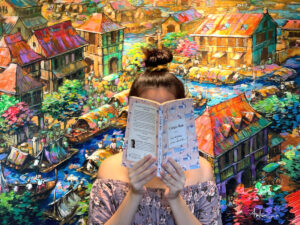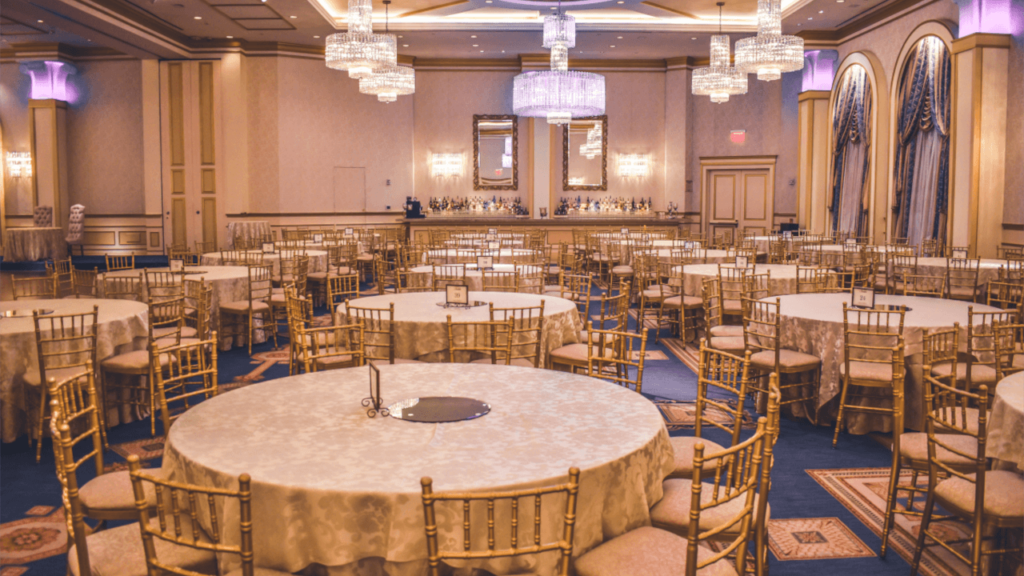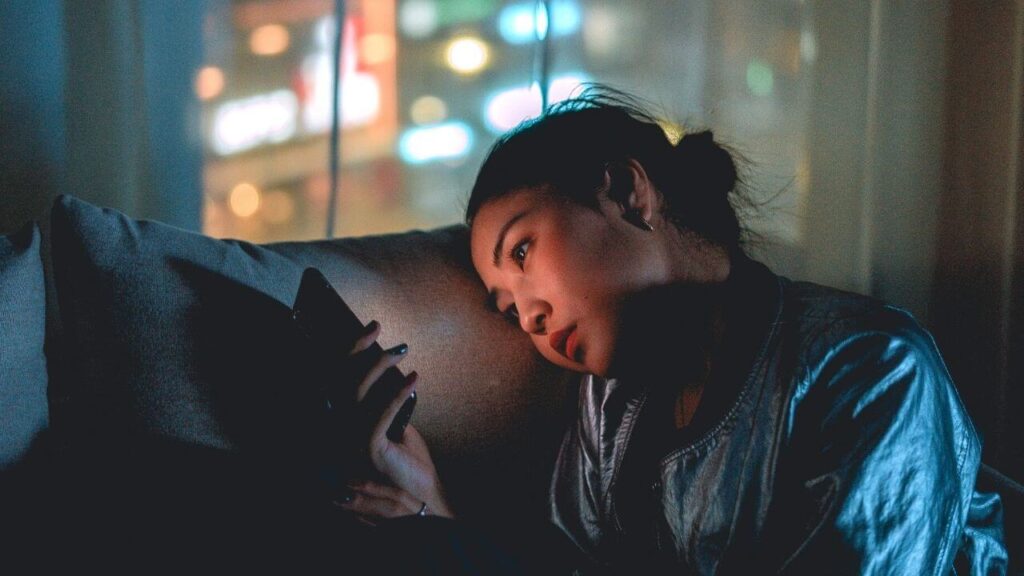Beyoncé was probably thinking of Filipinos when she wrote Drunk in Love.
Hugot is a uniquely Filipino cultural phenomenon. The word “hugot” literally means “to pull out;” put into context, it means to pull something deep within your emotions and express them through witticisms. Hugot is usually a sentimental one-liner about heartache and unrequited love. A classic example would be something like:
Pasahero: Manong, bayad po.
Driver: Ilan ‘to?
Pasahero: Isa lang kuya, sanay naman akong mag-isa eh.
(In English)
Passenger: Sir, here’s my payment.
Driver: For how many?
Passenger: Just one, sir. I’m used to being alone anyway.
(Taken from Taruc, 2016)
These sentiments are so widespread that they sneak into everyday conversations, and they are entertaining. Hugot even provides benefits to those who engage in it, as I’ll discuss later on. But I argue that the effects of hugot are not just harmless fun–that in fact, how institutions have exploited it is already causing damage.
It’s alarming that out of the 30 or so articles I read for this essay, only one touched on the negative effects of our hugot culture. I’m concerned that so few maintain a healthy skepticism towards this widespread cultural phenomenon. But perhaps, this lack of criticism is also just a testament to how normalized hugot is.
Now, some may think that I’m just wasting my time and making a huge deal out of something so wholesome. But, as I hope my arguments will show you, when left unquestioned, it can homogenize the arts and further turn serious public discourse into mere entertainment. Those are things to be concerned about.
Thus, to provide a comprehensive analysis of Filipino hugot culture, I will first track its history and discuss its functions in order to examine why hugot remains so prevalent. Then, I will discuss two negative effects of our hugot culture, then wrap up with some concluding thoughts.
To be clear, I’m not shaming nor faulting people who like hugot. On a personal level, I absolutely have no problem with it. I don’t have a right to tell people what to like; that’s just absurd and arrogant. What I have a problem with is how hugot is being used on a societal level. I’m ultimately concerned with how this means of providing laughter and catharsis is now ruthlessly commodified, and how that commodification has harmful effects.
Hugot itself is not a problem at all; the problem lies with how larger societal forces use it.
A HISTORY OF OUR OBSESSION WITH FAILED LOVE
Filipinos love love! We have historically been a romantic bunch of people, which is why hugot and all its sentiments about failed love are such a hit.
The kundiman, for example, is a traditional genre of love songs dating back to pre-colonial times. Its etymology is already very telling, as it’s a contraction of the phrase “kung hindi man” (if it’s not meant to be). If that isn’t a hugot, I don’t know what is. These songs are both tender and dramatic, and are usually about one’s unrequited love as circumstances keep lovers apart (Aguilar, 2010).
Then, there’s the harana. This one’s also a traditional genre of love songs, but sung by men to serenade women (Aguilar, 2010). They evoke a strong sense of uncertainty and yearning because you don’t know whether the person you’re trying to woo also want to be with you. Now that’s a hugot!
Themes of uncertain, unrequited, and failed love are also embedded in early Filipino literature. For one, the popular creation myth involving Alunsina and Tungkung Langit is one of tragic love (Manalastas, 2019); the first ever Philippine novel, Pedro Paterno’s “Ninay,” (1885) featured two stories of failed love (Lasco, 2017); and the first novel written by our national hero, Jose Rizal, also featured the failed love between Crisostomo Ibarra and Maria Clara.
Then came Original Pinoy Music (OPM) that started in the ‘70s. OPM has a vast range of genres, but popular ones include sentimental songs about failed love (Buenconsejo, 2020). Just turn on the radio, and you’ll probably hear Eraserheads belting out the tragic “Ang Huling El Bimbo,” or “Magasin,” which spotlights the one that got away. Honestly though, you’ll probably hear Ben&Ben’s “Kathang Isip”–the epitome of hugot.
Hugot as a trend right now also has roots in the emo-culture of the early 2000’s, banat, and pick-up lines (Sencil and Arias, 2017). And so, hugot has evolved from epic poems, elaborate myths, and kundiman love songs to memes, everyday one-liners like “Sana all” (I wish everyone’s also like that), and OPM songs.
Lasco (2017) listed some factors as to why Filipinos are drawn to stories of failed love. He argued that the Philippines as a country has already dealt with several failed romances herself. We held on to the promises of Spain and the United States when they colonized us, but were ultimately betrayed. Corrupt public officials also betray their promises to the people regularly. There are also wider forces that make love especially uncertain in the Philippines, such as having to overcome socio-economic inequities, family centered-ness, migration, and harsh calamities. All of these take control away from a pair of lovers.
JOIN THE WEEKLY NEWSLETTER!

Get updates on the latest posts and more from Alyanna Denise straight to your inbox. Guaranteed no spams.
By subscribing, you consent to receiving emails.
THE BENEFITS OF HUGOT
Aside from our cultural obsession with failed romances, hugot itself offers psychological and emotional benefits to those who take a crack at it, which is why it prevails.
First, it’s a strong coping mechanism that allows people to express and thus release deep-seated emotions (Dayrit and Ting, 2015; De Leon, 2018; Lorenzana, 2018). Hugot is effective at unburdening people’s psyche because by turning their despair into witty and funny jokes, people are able to reduce the power of their negative emotions. Manalastas (2019) even describes a sense of liberation as a result of unburdening one’s aches through hugot.
Second, it provides Filipinos a sense of community because hugot truly is a uniquely Filipino phenomenon (Rico, 2018). This may help in fostering a stronger sense of Filipino identity, especially for Filipinos living abroad.
Third, publicly posting hugot online is a means to “make empathy available during miserable situations” (Lorenzana, 2018, p. 156). By reaching out to others who may share a common experience of heartache, netizens’ affirmation and empathy afford social support to the person going through the ache.
There shouldn’t be a problem with hugot, but it’s now been turned into a commodity. This form of self-expression is now packaged and merchandised in order to sell movies, books, and songs, and to get people’s eyeballs to pay attention. Hugot is now a commodity, and little did we know, we’ve been made into its happy consumers.
I would argue that the two problems I am going to discuss also extend far beyond just our hugot culture–that actually, hugot is just a manifestation of the overall complicated and problematic obsession that Filipinos have with romance.
HOMOGENIZATION OF THE ARTS
I observe that commercial art in the country has become increasingly uniform (i.e., more homogeneous). The films, television shows, books, and music produced for the masses have increasingly been populated by love stories, which of course include hugot stories.
Half of the films at the 2020 Metro Manila Film Festival, for example, tackled romantic relationships. If you read a list of the country’s highest-grossing films of all time, you’ll see it’s populated with love stories too, the majority of them in the hugot variety.
Sentimental romances and “love teams” don’t only populate the big screen, but television shows too. Some of the country’s most popular teleserye (soap operas) in recent years include Forevermore, On the Wings of Love, Be Careful with My Heart, and Pangako Sa ‘Yo (apologies to GMA fans, I only know ABS-CBN shows). While these shows certainly tackle other themes as well, they still revolve around the central romantic relationships featured in each show.
The Filipiniana sections of the country’s biggest bookstores are also saturated with love stories. They’re stacked with romantic Wattpad novels, while classics such as Lualhati Bautista’s “Dekada ‘70” or Ninotchka Rosca’s “State of War” are nowhere to be found (believe me, I tried). Appreciation for poetry in the country was practically non-existent too, but poetry became popular around 2014 when Lang Leav and Juan Miguel Severo each published poems about love, loss, and heartache.
And what do we hear on the radio these days? It’s often Ben&Ben, Moira Dela Torre, December Avenue, and Silent Sanctuary crooning songs about failed and unrequited love. There’s also a reason why Lauv became particularly big in the Philippines; the majority of his songs revolve around heartbreak. Hugot.
Because the arts are an indicator of what a culture is preoccupied with, then this bombardment of romance from the arts worries me. What does it mean when Filipinos are mainly preoccupied with love stories as we face constant economic and political challenges?
Manalastas (2019) argued that “hugot, by all accounts, was never the point. It is merely the vehicle with which the point is brought across” (par. 34). I deeply question this now. It seems to me that in the arts, hugot is the end. Hugot is the point of a book or a movie or a song. It’s not just about catharsis anymore, but a vehicle to both entertain and profit from the masses.
Now, I completely understand why companies and artists constantly produce art about love–because those stories do indeed sell. But we have to be more responsible than that. Similar to Rivera (2019), I have no doubt that the constant bombardment of love stories has already skewed our recognition and support for artists; artists who don’t make romantic or comedic stories are already being left behind (box office numbers will show you that). And if we continue to homogenize the arts, then we also continue to homogenize thought, which is dangerous if we want to strengthen our critical thinking.
It’s like a cycle that never breaks. Our history and culture already predispose Filipinos to be a romantic bunch, so companies capitalize on that and now, we’re oversaturated with love stories. The fact that it’s so common to hear hugot in everyday conversations means that this obsession with love is deeply ingrained in Filipino consciousness already. And this obsession is further capitalized upon, is thus ingrained in us deeper, and on and on the cycle goes. Panaligan (2017) argues a similar point, “Big media industry has a hand in conditioning Filipinos to be absorbed with telenovelas and Filipino movies. They lure viewers in, and in effect people become fascinated with hugot lines” (par. 6).
I’m not saying we should stop producing art related to romantic love or hugot; what I argue is that we should increase access and support to artists who want to do something else. I understand how stories about love and laughter are a welcome escape from the difficulties of reality. But critical thinking is also more important now than ever. And if we diversify our arts, we diversify the things we think about and how we think about them too.
PUBLIC DISCOURSE AS ENTERTAINMENT
Hugot has not only populated the arts, but public life too.
Politicians often crack hugot jokes to make their messages more entertaining and thus to connect with the masses. Netizens also post hugot lines when complaining or discussing politics. In terms of education, hugot lines are used to illustrate lessons in learning modules and are even used to educate people on traffic laws. My friends have personal experiences with this, as some of their professors explain course concepts by alluding to hugot jokes.
Now, hugot can certainly be a means to open conversations and to build understanding. But it certainly shouldn’t be the entire conversation either. I personally find it hard to discuss with someone if they end their point with a hugot punchline–if they end with something like “Sana all.” That’s because one can like or dislike a hugot, but one cannot refute it. How can you continue the conversation about politics or economics when someone suddenly alludes to failed love? Hugot may be a conversation opener, but it certainly is a conversation stopper as well.
Hugot is entertaining, which is why injecting it into public life nudges public life into entertainment. It doesn’t even make us better-informed citizens, but better consumers of hugot. And I ask myself, what happens when serious discourse is turned into entertainment? Messages certainly become more accessible if they’re made funny with hugot one liners, but these jokes also make important messages and arguments feel less serious. And so ultimately, we get less serious conversations and less serious engagements.
Postman (2005) predicted that some form of this pacification would happen: “Our brief attention span and our appetite for feel-good content can short-circuit any meaningful discourse” (p. xvi). Instead of debating with each other using logic and evidence and outlining the reasons behind our complaints, we resort to witticisms and flair. And truly, there’s no meaningful discourse behind that. We’ve become so used to entertainment that public life has had to accommodate that appetite for amusement.
I’m not arguing that hugot is the reason why the line between serious public discourse and entertainment is dissolving–that’s been happening for decades now. What I argue instead, is that our omnipresent hugot culture is a manifestation of that dissolve. It’s a clue to the degradation of serious public discourse in the country.
Hugot and comedy in general may still have a place in politics and education–but they must not overstep their place. They make knowledge more entertaining and thus more accessible, but because they also make knowledge less serious, those jokes should only be openers to serious conversations. They must not be the point nor the punchline to something being argued or taught.
CONCLUDING THOUGHTS
Filipinos have always been a happy and positive people, which is why witticisms like hugot are such a big hit with us. I now suspect, however, that while laughter certainly functions as an effective coping mechanism, it’s also a hindrance to prosperity. After all, the emotions that propel people to stand up and make changes are not amusement or happiness; it’s anger, sadness, and pain.
Ultimately, I’m concerned with how hugot can be used to pacify the masses, especially with how it’s being commodified by institutions now. English author Aldous Huxley predicted in his novel, Brave New World, that providing the masses with amusements pacifies discontent. Eerily, our hugot culture does pacify discontent by making amusing jokes out of despair.
So, what happens when the very spaces to express our discontent are sprinkled with amusement and entertainment? What happens when the arts, a space to let us think and feel, are concerned about sentimental love above all else? What happens when politics and education, spaces for us to discuss and learn, are made entertaining and charming? I think it’s high time we re-think about the place that hugot and romance have in our culture.
WORKS CITED
Aguilar, F. (2010, November 9). The Difference Between Harana and Kundiman. Florante Aguilar.
Buenconsejo, J. S. (2020, August 8). The “Popular” in Philippine Music. Journal of Philippine Music.
Corrales, N. (2016, January 21). Aquino to corrupt politicians: ‘Walang forever’. Inquirer.
Dayrit, M. G., & Ting, J. P. (2015, June 24). #Hugot. The Guidon.
De Leon, P. J. (2018, February 6). De Leon: Is ‘hugot’ culture on its way out? Sunstar.
Jaucian, D., & Liwag, J. T. (2020, December 30). REVIEWS: Metro Manila Film Festival 2020. CNN Philippines.
Lasco, G. (1970, January 1). Essay: The art of ‘hugot’ in our republic of ‘sawi’. Gideon Lasco.
Lena, P. (2020, February 10). ‘Hugot’ signs to educate millennials on traffic laws. Philippine News Agency.
Lorenzana, J. A. (2018). Effervescence, Resonance and Emotive Practice on Social Media: Public Expressions of Heartbreak Among Young Filipino Twitter Users. In A. S. Dobson, B. Robards, & N. Carah (Eds.), Digital Intimate Publics and Social Media (pp. 145–160). essay, Palgrave Macmillan.
Manahan, M. (2016, May 11). #ElectionHugot Lines That Are Hilarious But True. When In Manila.
Manalastas, A. (2019, December 31). That thing called ‘hugot’: Looking back on the decade that gave ache a name. ABS-CBN.
Panaligan, J. (2017, March 20). Allure of “Hugot” Culture. Pop Talk.
Postman, N. (2005). Amusing Ourselves to Death: Public Discourse in the Age of Show Business (20th Anniversary). Penguin Books.
Rappler. (2020). Director Jose Javier Reyes ‘infuriated’ at ‘hugot’ lines used in learning modules. YouTube.
Rico, A. R. (2018, October 31). #Hugot: a uniquely Filipino phenomenon. SnippetX.
Rivera, K. (2019, March 4). Enough ‘hugot’. Inquirer.
Sencil, M., & Arias, L. (2017). Reflecting Filipino Identities Through Hugot in Three Philippine Films: A Contextual and Prosodic Analysis (thesis). Research Gate.
Taruc, J. (2016, July 13). #TravelHugot: Jeepney Hugot story. Easy Rock.
Wikimedia Foundation. (2021, March 8). List of highest-grossing Philippine films. Wikipedia.
Want more commentary? You can read my previous analysis on Philippine debuts here!



I already hate hugot so thank you for giving me more reasons to do so. 🙂
LOL! Yeah I was never the biggest fan of it either, and I had to ask myself why I feel that way, which is how this post was born. 🙂